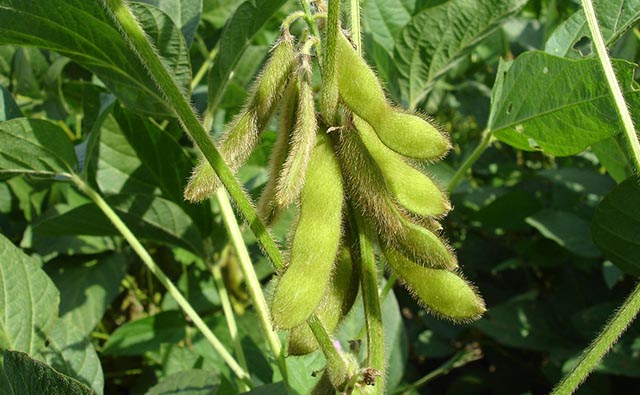Industry News, Fungicides, Agriculture & Feed
Is the Way Soybean Farmers Manage Disease Shifting?

Industry News, Fungicides, Agriculture & Feed

High yielding soybeans have become one of the hottest topics in many of the conversations I have. We still scratch our heads on just how we can get the soybean plant to retain more of its flowers that will eventually turn into pods filled with seeds.
In the race to positively influence yields, we (farmers and ag retailers) have adopted different management practices, such as narrow row spacing, reduced planting population and earlier planting. Over the last 10 years, more farmers and retailers have started to also take a look at how fungicide use can not only control disease pressure but enhance crop physiology to help maximize yield potential.
In my role, I have the privilege of working with many different people and the question of a sequential fungicide pass is one that continues to come up as we push soybean yields higher and higher. Agronomic topics like these do not have a one size fits all solution, and it is always important for farmers to work with their trusted agronomy advisor to see what the best options are for their acre are to be sure they get a return on their investments.
It wasn’t long ago when the use of foliar fungicides were reserved for special circumstances or specialty crops. In the past decade, the use of soybean fungicides has dramatically increased. According to the National Agricultural Statistics Service (NASS), the percent of soybean acres with fungicide applications has doubled from 2012 to 2020. As we become more educated on what makes a soybean “tick,” I believe this trend will continue to increase.
Three factors have played a role in the escalation of fungicide use in soybeans: New chemistries, emerging disease concerns and education. These factors have led to a greater awareness of fungicides’ potential and, ultimately, use by farmers. It doesn’t hurt that higher commodity prices have helped justify an additional pass across the field.
There has also been a shift to a more proactive approach with fungicide use. Traditionally, farmers would wait until they saw disease thresholds in their field before applying a fungicide. However, university and independent research alike, have shown consistency in fungicide performance year in and year out. This is even the case when disease pressure is light, as certain fungicide active ingredients provide plant physiology and preventative benefits to a soybean plant.
Planting soybeans early is a tactic a growing number of farmers have gravitated toward. However, early planted soybeans are especially vulnerable to early-season diseases like Phytophthora and Pythium. These diseases attack soybean seedlings before the plants even emerge, which can result in stand loss or replanting in extreme cases. This is where seed treatments have been crucial in protecting young soybeans but even the best seed treatments eventually wear off.
In my territory of Kentucky and Tennessee, it is becoming more common to see farmers contemplate a two-pass fungicide program. The reason for the additional application: Farmers want to help plants reach more of their yield potential. There are three common paths farmers interested in a two-pass fungicide disease management program could take:
One challenge that the two-pass fungicide program helps address is the ability to get complete coverage of the plant. Fungicides will move up and outwards but not down. We know each trifoliate on the soybean plant is responsible for producing the weight for the pods at that specific node, so coverage of the “money nodes,” 6-13 is crucial. By using an At-Plant fungicide as part of the program, there’s a level of coverage and protection already in place on Day One. Then coming back with a foliar fungicide application during the crucial reproductive stage can extend that protection to keep the plant healthy through maturity. This is a similar mindset to the one we have adopted in weed control, which is to keep the weeds from ever coming up. We are trying to keep the disease from ever having the chance to reduce yields.
Farmers looking to strengthen their disease management strategy or simply maximize their yield might find the two-pass approach as a means to meet their goals. This is particularly the case if they have a field with a history of disease or a field that is continuously soybeans year-after-year. A two-pass fungicide approach may not be for every farmer but there are scenarios where this strategy can really pay off in their program.
At the end of the day, we never know what the growing season is going to throw at us, and it’s hard to say what’s going to happen the day, or days after we put the seed in the ground. Many factors influence the final yield of each field, and many of those factors are out of our control. We are constantly working to figure out ways to increase farm yield averages and get consistent returns on our investments. Fungicides are just one piece of the puzzle in achieving high yielding soybeans.